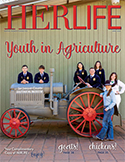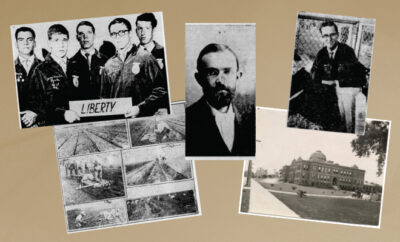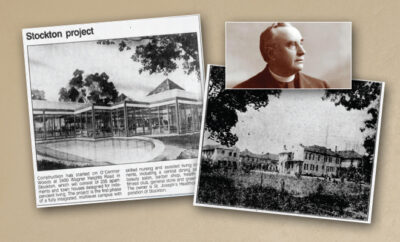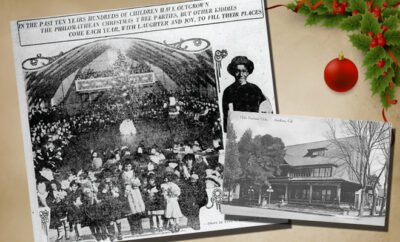
Remembering the Woman’s Land Army
by Phillip Merlo
Photos courtesy of the Stockton Historical Society
Women have played a significant role in San Joaquin County agriculture since the first farms were established on the outskirts of Stockton in the 1850s. One chapter of women’s agricultural history in our community that’s worth remembering is that of the Women’s Land Army, the famed farmerettes of World War I and World War II.
The Woman’s Land Army of America, or WLAA, was a ladies’ organization launched during the First and Second World Wars with the goal of replacing male farm workers who had been drafted to serve in the U.S. military. Known as the farmerettes, the woman who worked for the WLAA were organized into corps and established camps across the United States, where they would then be directed by officers to report for duty at local farms.
In San Joaquin County, the WLAA was particularly prominent during WWI, establishing a major camp at Villinger’s Grove, modern-day Hale Park, in Lodi. After the program was announced by federal officials in May 1918, the Stockton Chamber of Commerce put out a call for recruits, and Mrs. A.J. Cook of Stockton was named the chairwoman of the San Joaquin County corps. Enrollment was for a minimum of four weeks. Enlistees were paid a minimum of $2 a day and were housed and fed for $1.15 a day. By September 1918, the program had won the hearts and minds of the local agricultural industry, with notables such as William Micke, W. W. Cowell of the Manteca tomato industry and others clamoring for WLAA farmerettes to work in their packing sheds. The following passage was written about the Lodi Camp by investigative reporter Matthew Hamilton on September 20, 1918, in the Stockton Daily Evening Record, in an article titled “Woman’s Land Army is Doing Great Work At Lodi Saving Northern San Joaquin County Crops.”
Lodi has capitulated to the Woman’s Land Army.
On August 31st it pitched its tents before the gates of the city, thirty-five strong, and at once went into action.
Suspicion and fear fled before it and today it occupies the high ground, commanding the Tokay Center, having won the entire population over to its side, and occupies a permanent place in the hearts of the people of Northern San Joaquin.”
The WLAA would continue to play a major role in alleviating workforce concerns in San Joaquin County agriculture through 1920, at which point they disbanded as veterans returned home from the war. Several of the leading ladies of the San Joaquin WLAA had served as leading suffragettes of the earlier 1911 fight for women to earn the right to vote in California, including Alice Grayden Phillips and Edith Mel, while most recruits were UC Berkeley students or recent high school graduates from Stockton High or the Bay Area.
The WLAA would be revived in 1943 as part of an initiative by the United States Crops Corps and it would employ nearly 3.5 million workers across the United States. While the WWII-era farmerettes received less media coverage, records show that they were more numerous, with nearly 1,000 farmerettes serving in San Joaquin County during the war.
The farmerettes of the Woman’s Land Army were a major force in local agriculture. Their story should serve as a timely reminder that when you need something done, you can always count on the ladies of the community.










